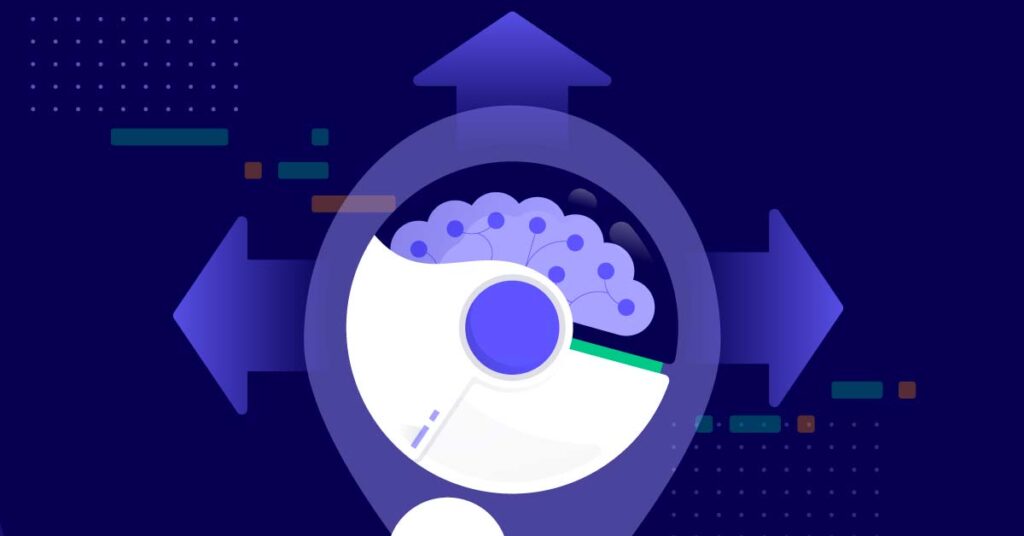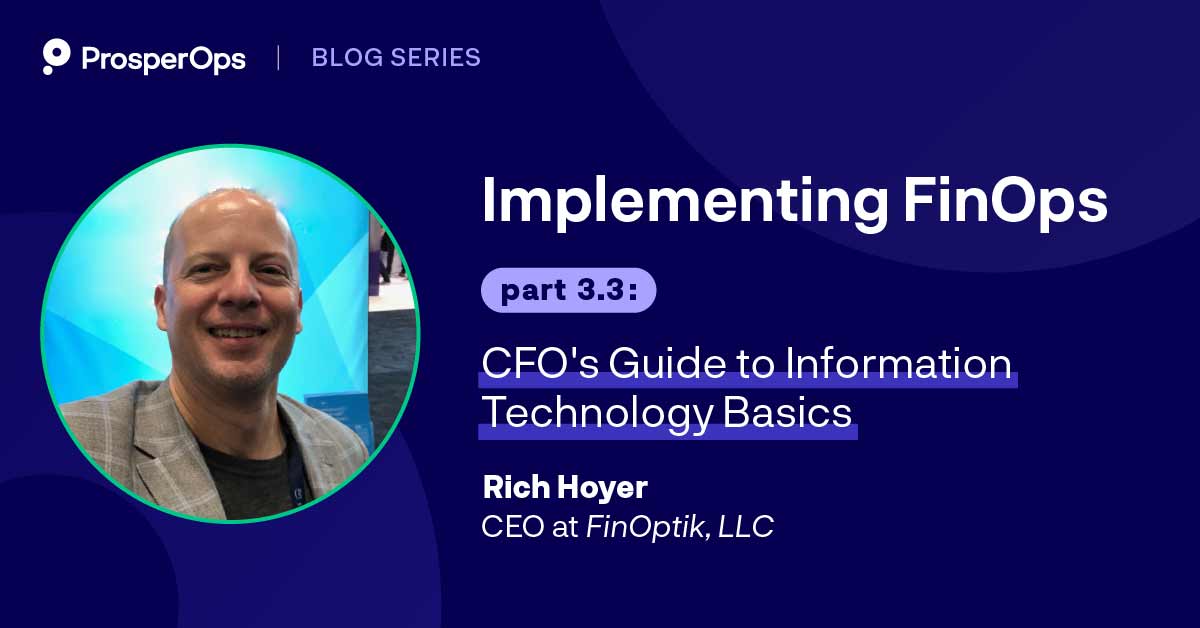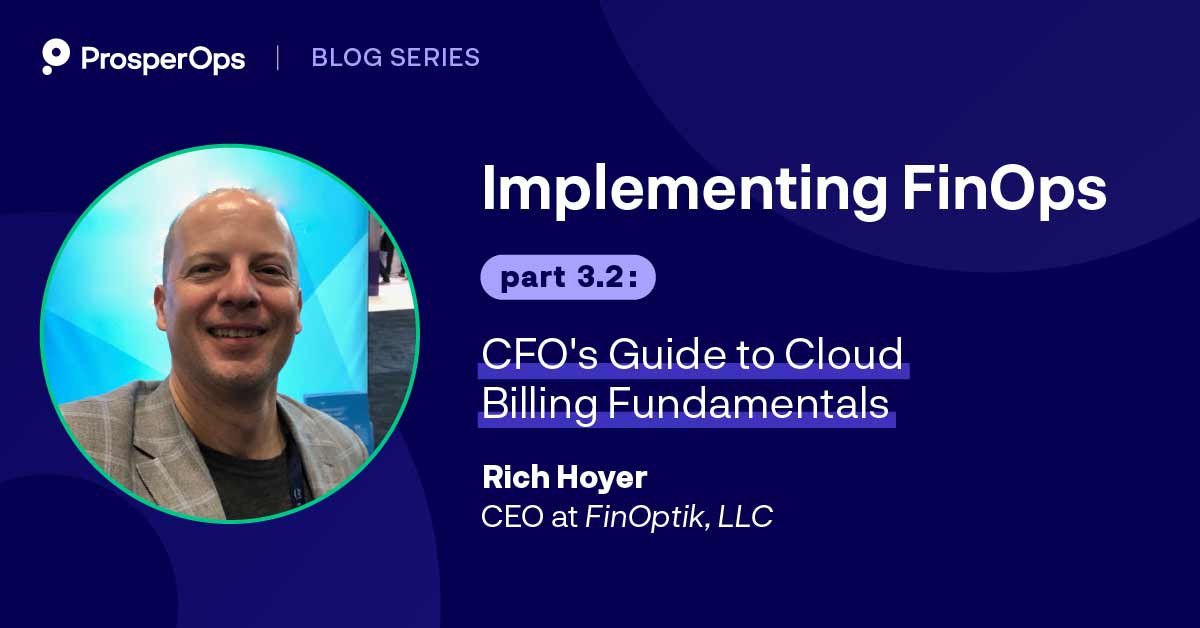AIOps is a convergence of AI and IT operations, helping AWS users grapple with the intricacies of cloud computing.
According to McKinsey, 70% of companies will employ hybrid or multicloud management technologies, tools, and processes in the years ahead. Because of this relentless pace of technology development, AWS customers often find themselves managing complex IT problems, and the challenge they face is to keep up without compromising customer service.
AIOps can help.
In this article, we’ll define what AIOps is and how it works, outline the problems it solves, and explain its benefits.
Defining AIOps: What is it?
AIOps stands for artificial intelligence for IT operations. It’s an approach that automates and enhances IT operations management with the help of AI in order to make IT systems more efficient and effective.
AIOps solutions can help AWS customers and end-users resolve common IT issues without human intervention.
Understanding the shift from reactive IT to proactive IT
AIOps revolutionizes traditional IT operations, which are often bogged down by “firefighting” or trying to fix problems as they occur.
The AIOps approach leverages AI, automation, and machine learning to shift from a reactive to a proactive stance. AIOps anticipate and resolve issues before they impact key business metrics, allowing for more accurate decision-making and efficient problem-solving.
Here’s a typical use case: AIOps can transform scheduled maintenance into predictive maintenance. So, instead of routine checks, it analyzes real-time data like server logs to predict system needs in the future, reducing downtime and increasing cost savings.
The key components of AIOps
There are two main components of AIOps:
- Big Data
- Machine learning
Big Data
Big Data refers to the massive amount of operational data collected from IT sources.
AIOps helps you streamline predictive analytics so you can make sense of all this information. With AIOps, You can interpret the data, providing visibility into IT operations and allowing proactive decision-making.
By recognizing patterns in the data, you can identify issues and take appropriate actions.
Machine learning
Machine learning (ML) helps you automatically process and analyze the vast amounts of data generated by IT systems.
By using ML techniques, AIOps can learn from this data. It can identify normal and anomalous patterns and automate root cause analysis.
Thus, instead of spending hours sifting through data and trying to pinpoint issues, you can trust your AIOps system to do the heavy lifting—freeing up valuable time for more strategic tasks.
How AIOps works
AIOps leverages advanced technologies like machine learning and artificial intelligence to streamline IT operations.
We can break it down into four main steps:
- Data collection and analysis
- Machine learning algorithms
- Automation and orchestration
- Continuous learning and adaptation
Data collection and analysis
Data collection means gathering information from logs, performance metrics, and user interactions to understand your IT environment. The analysis then processes and normalizes this data for machine learning models.
In AIOps, we use two key data types:
- Historical data: Establishes baselines and identifies patterns
- Real-time data: Addresses immediate issues like performance or security threats.
Key steps in data collection and analysis include data ingestion, data normalization, data analytics, and machine learning model training.
By following these steps and leveraging both historical and real-time data, your IT operations become more efficient and agile.
Machine learning algorithms
Machine learning plays a pivotal role in detecting complex patterns and predicting future issues to minimize disruptions.
AIOps uses ML algorithms to analyze vast amounts of data from various sources.
As it continuously processes this data, the algorithms automatically adjust themselves, improving their accuracy and efficiency. Then, the system can identify unknown patterns and connections.
Machine learning in AIOps helps streamline your workflows in multiple ways, including reducing false alarms, predicting trends, and automating repetitive tasks.
Automation and orchestration
Automation in AIOps refers to the automatic resolution of issues, while orchestration involves coordinating automated tasks across different IT systems.
Some key benefits include reduced manual intervention, as well as improved efficiency and accuracy.
So, how can you make the most of automation and orchestration?
Start by identifying key IT processes that could benefit from automation, such as performance monitoring, workload scheduling, and data backups, as suggested by AWS.
Then, map out your IT systems and coordinate your automated tasks across them using orchestration tools.
Continuous learning and adaptation
Continuous learning is the ongoing process of updating ML models as they gain access to new data.
As your IT environment evolves and new information is collected, the AI algorithms adjust themselves to better understand and predict the behavior of your systems. So you get improved performance, more accurate anomaly detection (such as cost anomalies), and better root cause analysis.
Incorporating real-time monitoring tools and apps can play a crucial role in continuous learning. And the more data you have at your disposal, the better your AI system will perform.
The modern IT challenges that AIOps addresses
Today’s IT landscape is changing fast, and AWS IT operations face many new challenges that need advanced solutions.
AIOps can address some of these modern IT challenges, such as increasing complexity, speed, data volume, availability, performance, and cybersecurity concerns.
Here’s how:
Increasing complexity, speed, and scale of IT environments
AWS IT operations are becoming more complex, fast-paced, and large-scale, and traditional IT management tools can struggle to keep up with these changes.
Consider AIOps as a practical solution to help you grow and scale your IT operations in this increasingly complex environment.
The benefits are numerous, but two of the main ones are:
- An ability to handle an overwhelming amount of data sources.
- An ability to continually manage vulnerability risks.
These two powerful features can better help IT operations adapt to the increasing complexity, speed, and scale of modern IT environments and keep up with the rapid evolution of AWS as it continues to update and improve its products.
Demand for high availability and performance
The world operates in a 24/7 digital economy. AIOps plays a crucial role in ensuring maximum availability and optimal performance for your IT infrastructure.
Both factors have a direct impact on customer experience.
When it comes to managing cloud-based services, every second counts in terms of cost and performance.
As AWS bases cloud billing on a utility model, you should consider both factors when deploying AIOps. Although performance usually takes precedence over cost, you need to maintain a balance.
AIOps can help you with rapid issue identification, smarter alerts, and proactive fixes.
Siloed operations and data overload
Nowadays, it’s quite common for IT organizations to have a fragmented and siloed operations environment. This can create bottlenecks, leaving you with an incomplete picture of your systems’ performance.
AIOps can streamline your IT operations and combine information from multiple sources, combining this disparate data into a unified view. From this, your team can then get a comprehensive understanding of the data and alerts flooding your systems.
AIOps platforms can also help you manage large volumes of data by leveraging machine learning algorithms to analyze and prioritize alerts. With the increasing complexity of modern IT environments, monitoring this data becomes a full-time job. AIOps bears the weight of all this data crunching, allowing you the ability to focus on other important aspects of your business.
Cybersecurity threats and compliance pressures
AIOps can help you rapidly identify and respond to cybersecurity threats. By using AI algorithms to analyze the vast amounts of data generated by your IT systems, AIOps platforms can detect potential security breaches and malicious activities much faster than traditional methods.
Quick response times allow you to mitigate risks and reduce the impact of attacks on your organization.
Another issue is compliance. One of the key aspects of IT governance is ensuring your organization follows the necessary rules and guidelines, and with the ever-increasing complexity of IT infrastructure, staying compliant can be a daunting task.
AIOps helps you safeguard your organization’s data and ensure it operates within the boundaries of the law.
Benefits of implementing AIOps in an organization
This section outlines a few notable benefits of AIOps for IT organizations. As we’ve already outlined above, AIOps can be a game changer for you and your team. Here are some of the multiple benefits AIOPs can provide when you integrate it into the workflow of your IT team:
Enhanced problem solving
AIOps can change the way you tackle IT operations and problem-solving. By seamlessly integrating AI, your team benefits from actionable insights and automated responses to complex issues. Because of this, incident management becomes easier.
Combining big data, machine learning, and advanced analytics, you can quickly identify and troubleshoot performance problems. When you analyze data from multiple sources, AIOps can help you make real-time decisions that can improve your IT operation’s overall efficiency.
AIOps also has great predictive analysis capabilities. By studying historical data, patterns, and trends, AIOps tools can forecast future IT events, allowing you to make strategic decisions and mitigate risks before they happen.
Improved operational efficiency
AIOps helps improve operational efficiency by automating routine tasks that would otherwise occupy valuable time from your IT staff. And with automation taking care of repetitive tasks, your team can focus on more strategic initiatives.
How does AIOps achieve this? By leveraging advanced technologies like machine learning and natural language processing, AIOps platforms can automatically:
- Prioritize and route incidents
- Find patterns in data
- Detect anomalies
- Make recommendations for optimizations
This can help your IT operations team dramatically boost efficiency and manage complex systems, giving them the ability to identify issues before they escalate into major problems, saving time and resources.
Better service delivery
By providing faster problem diagnosis and better visibility into the potential cause and effect of operational issues, AIOps helps you minimize downtime and optimize IT service management.
Here are just a few ways AIOps enhances service delivery:
- Proactive monitoring assesses your IT infrastructure’s health, forecasting potential issues before they escalate.
- Real-time insights offer a comprehensive view of your entire IT environment, helping you make informed decisions.
- Continuous optimization identifies cost-saving opportunities and helps you optimize the performance of your services.
The bottom line is that AIOps frees up your time so you can focus on what truly matters, like providing a top-notch customer experience and meeting your performance targets.
Exploring the future of AIOps: What to expect
Demand for digital transformation initiatives will increase going forward, and AIOps will continue to evolve. As the complexity and speed of IT systems increase, integration of artificial intelligence in modern IT solutions will be critical.
Here’s where AIOps is likely going in the years ahead:
Integration with other technologies
As AIOps advances, you can expect it to become more intertwined with other emerging technologies, such as DevOps, IoT, edge computing, and serverless architectures.
These integrations will shape the future of IT operations, enabling your teams to harness the full potential of AI-driven automation and data processing.
One of the key aspects of AIOps integration is its potential to act as a bridge between different technology silos.
By facilitating seamless interoperability and enhanced data sharing, AIOps can help break down barriers between various platforms. This way, your IT team can collaborate efficiently and make informed decisions based on a comprehensive data-driven approach.
Expanding role within IT
AIOps’ role is quickly expanding within IT operations, going beyond the traditional troubleshooting and maintenance tasks. It offers a wealth of benefits in change management, as well as predicting outcomes and ensuring smooth transitions during upgrades and deployments.
By leveraging artificial intelligence and machine learning, you can analyze data in real time and quickly identify potential issues and opportunities for improvement.
For example, consider the implementation of a new IT system. AIOps can play a pivotal role in managing this change by monitoring its effects on your organization’s overall performance. If any issues arise, you’ll be alerted quickly so you can make adjustments before they escalate and impact your organization.
Harness the future of AIOps in IT with ProsperOps
As the future of AI becomes more intertwined with IT operations, you’ll need to stay up to date. Implementing AIOps can offer extensive benefits, such as improved visibility, automation, and intelligent decision-making.
One way to enhance your AWS IT operations with AIOps capabilities is by partnering with a solution provider like ProsperOps.
Want to discover how ProsperOps can help you reduce cloud costs, minimize commitment risk, and remove manual cost optimization tasks from your workflow? Schedule a demo today.




